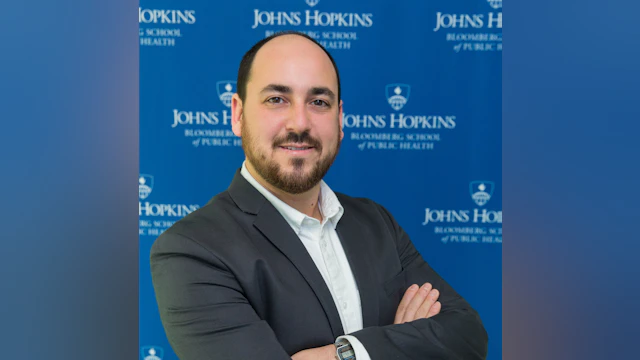The Research Roundup is a regular update of recently published findings in suicide prevention research. AFSP-funded studies included in this roundup examined how…
- Child access prevention laws may play a part in reducing youth firearm suicide rates
- Sleep problems may fuel suicide risk in adolescents
- We can screen for suicidal thoughts and behaviors in children under the age of eight, and
- Brain structure may relate to suicidal attempts in adulthood and late adolescence

Researcher: Paul Nestadt, MD
Institution: Johns Hopkins Bloomberg School of Public Health
Grant Type: 2019 Young Investigator Grant — $90,000
Grant Title: Characterizing Suicides among Opioid-Related Deaths
Firearms are the most frequently used means of suicide, and youth with access to them face significantly higher risk. With rising rates of youth suicide — especially by firearm — ensuring safe storage of guns in homes has become a pressing public health concern. Child Access Prevention (CAP) laws, which mandate secure firearm storage to limit access by minors, have been promoted as a potential policy solution. However, questions remain about their effectiveness, the most impactful components of these laws, and whether they reduce suicide deaths without leading to substitution by other methods. Identifying which aspects of CAP laws offer the greatest protection is critical for guiding evidence-based policy to reduce youth suicide.
Using mortality data from all 50 states between 1990 and 2020, Dr. Paul Nestadt used his AFSP grant to look beyond his initial focus of opioid-related deaths and found that the presence of CAP firearm storage laws was associated with significant reductions in youth firearm suicide rates. Laws requiring firearms to be stored unloaded and in a locking device were especially effective, and those applying to youth under age 16 were more protective than those ending at younger ages. Importantly, these reductions in firearm suicides were not accompanied by increases in nonfirearm suicides, unintentional firearm deaths, or homicides — refuting concerns about method substitution or misclassification. These findings underscore the importance of strengthening child firearm storage laws as a means of suicide prevention, especially in states with high firearm ownership.
Citation: Athey, A., Nestadt, P. S., Rogers, M. L., Dunton, Z., McCourt, A., & Wilcox, H. C. (2024). A National Evaluation of the Impact of Child Access Prevention Laws on Rates of Youth Suicide and Other Youth Firearm Deaths. Journal of the American Academy of Child and Adolescent Psychiatry, S0890-8567(24)01991-9. Advance online publication. https://doi.org/10.1016/j.jaac.2024.11.009

Researcher: Catherine Glenn, PhD
Institution: Old Dominion University
Grant Type: 2017 Young Investigator Grant — $85,000
Grant Title: Sleep Disturbance and Short-Term Suicide Risk in Youth After Psychiatric Hospitalization
Adolescence is a developmental period marked by heightened emotional reactivity and disrupted sleep patterns. Emerging evidence suggests that sleep problems, such as difficulties falling asleep and reduced sleep duration, may be modifiable risk factors for suicidal ideation. However, little is known about how sleep disturbances actually increase suicide risk in youth. Uncovering the short-term mechanisms linking sleep problems and suicidal thinking is critical for designing real-time interventions. One promising pathway between sleep disturbances and suicidal thoughts and behaviors involves anhedonia — the diminished ability to experience or anticipate pleasure — which may help explain how sleep disruption escalates suicidal thoughts.
Dr. Catherine Glenn, using her AFSP-funded grant, followed 48 adolescents hospitalized for suicide risk who were recently discharged from acute psychiatric care, collecting 28 days of real-time data via sleep diaries and real-time assessments. Dr. Glenn found that shorter total sleep time and longer sleep onset latency (e.g., difficulty falling asleep) were both associated with increased next-day difficulty experiencing in-the-moment pleasure (i.e., consummatory anhedonia), which in turn predicted heightened suicidal thoughts. Anticipatory anhedonia (i.e., difficulty looking forward to future pleasure) was also linked to suicidal ideation but did not affect the relationship between sleep and suicidal thoughts and behaviors. These findings suggest that sleep-related deficits, such as anhedonia, in experiencing pleasure may be a key mechanism fueling suicide risk and can be a focus of new interventions.
Citation: Patel, K. K., Kearns, J. C., Foti, D., Pigeon, W. R., Kleiman, E. M., & Glenn, C. R. (2025). Anhedonia Links Sleep Problems and Suicidal Thoughts: An Intensive Longitudinal Study in High-Risk Adolescents. Research on child and adolescent psychopathology, 53(3), 331–347. https://doi.org/10.1007/s10802-024-01275-w

Researcher: Laura Hennefield, PhD
Institution: Washington University in St. Louis
Grant Type: 2022 Early Career Research Grant — $139,014
Grant Title: Exploring Place-Based Differences in Adolescent Suicide, Mental Health, and Suicide Mechanism
Children as young as four can experience suicidal thoughts and behaviors (STBs), yet suicide risk screening tools are rarely designed for this age group. The lack of validated measures for young children leaves a critical gap in prevention efforts, despite rising rates of suicide-related emergency visits and mounting evidence that early-onset STBs often persist into adolescence. Concerns about children’s ability to self-report, as well as fears about introducing suicide-related content, have hindered assessment. Developing a practical, caregiver-report tool could offer a safe and effective way to identify suicide risk in young children, enabling earlier intervention and more equitable access to care.
With support from an AFSP grant, Dr. Laura Hennefield developed and tested a brief, four-question screener to help caregivers identify suicide risk in children ages 4 to 7. The tool showed strong accuracy in detecting both passive and active suicidal thoughts without requiring any special training to use. It performed well across a diverse group of families and could be a valuable resource for pediatricians and mental health providers. While further testing is needed, this screener offers a promising way to catch early signs of suicide risk and connect young children and their families to the care they need.
Citation: Hennefield L, Chen C, Agali U, Luby JL, Preliminary Validity for a Brief Caregiver-Report Screener for Suicidal Thoughts and Behaviors in Children Under Age 8 JAACAP Open (2025), doi: https://doi.org/10.1016/j.jaacop.2025.02.004

Researcher: Yi Zhou, MSc
Institution: Virginia Commonwealth University
Grant Type: 2022 Pilot Research Grant — $30,000
Grant Title: Investigation of the Neural Correlates of the Acquired Capability for Suicide in Child and Adult Brains
Suicide prevention efforts have long sought reliable, objective markers that could help identify individuals at elevated risk before a crisis occurs. Brain structure has emerged as a promising area of investigation, with research increasingly linking certain neurobiological features to suicidal behavior. If differences in cortical (brain) surface area or thickness are found to play a causal role in suicide risk, this could open the door to early detection strategies and biologically informed interventions. This is particularly relevant for youth, where early changes in brain development may signal emerging vulnerability, and understanding these mechanisms could guide age-appropriate preventive efforts that interrupt the trajectory toward suicidality.
Yi Zhou used his AFSP Pilot Grant to analyze genetic and brain imaging data from both adults and children in order to assess whether differences in brain structure can play a role in increasing the likelihood of suicide attempt. In adults, he found that smaller total cortical surface area was consistently associated with a higher likelihood of suicide attempts. In contrast, the same relationship was not found in children. However, in youth, thinner average cortical thickness was linked to higher levels of depression and internalizing symptoms, both of which are well-established precursors to suicidal behavior. Together, the findings suggest that structural brain differences may influence risk for suicidal behavior differently depending on age, emerging more apparently in adulthood. Understanding these patterns could help identify high-risk individuals earlier and tailor prevention strategies across developmental stages.
Citation: Zhou Y, Castro-de-Araujo LFS, Singh M, Neale MC, Causal Analyses of Associations Between Brain Structure and Suicide Attempt in Adulthood and Late Childhood, JAACAP Open (2025), doi: https://doi.org/10.1016/j.jaacop.2025.02.005
Learn more about the AFSP research grants featured in this monthly roundup, as well as others, here.
